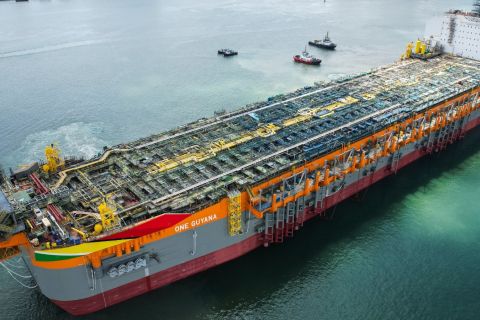
(Source: Shutterstock.com)
The inevitable collapse of M&A within the oil and gas industry during first-quarter 2020 grinded out a mere $770 million in deals—about one-tenth of typical values—as E&Ps drowned in oversupply, according to a recent Enverus report.
As oil prices plunged to 18-year lows, the quarter’s deal value fell far below the $8 billion averaged in the past decade. Enverus said that nearly all deals were transacted before the COVID-19 pandemic and the over pumping of crude oil by Saudi Arabia as OPEC’s production détente with Russia fell apart, Enverus said in the April 2 report.
Featured deals of the first quarter included bankruptcy sales and a royalty deal.
“Even before oil prices collapsed on COVID-related demand issues and the surge in global production led by Saudi Arabia, M&A markets were highly challenged,” said Andrew Dittmar, senior M&A analyst for Enverus. “Responding to Wall Street pressures, E&Ps had slashed spending and refocused from growth to cash flow, dampening the appetite for acquisitions.”
The largest-first quarter deal was the successful stalking horse bid by Alpine Energy Capital for the assets of bankrupt Midland Basin operator Approach Resources, according to Enverus. The assets were sold as part of a Chapter 11 proceeding for $193 million.
First-Quarter 2020 Upstream Deals |
||||
|---|---|---|---|---|
| Date Announced |
Buyer | Seller | Asset | Amount ($MM) |
| 2/4/2020 | Alpine Energy Capital | Approach Resources | Midland Basin (bankruptcy sale) |
$193 |
| 1/31/2020 | Undisclosed | ConocoPhillips | Conventional | $186 |
| 1/9/2020 | Kimbell Royalty Partners | Springbok Energy | Royalty interests | $175 |
| 1/24/2020 | KeyBank | EdgeMarc Energy | Marcellus Shale (bankruptcy sale) |
$90 |
| 1/26/2020 | Undisclosed | HighPoint Resources | Diversified | $27 |
Enverus speculated that bankruptcy sales might drive future deal flow or be a new clearinghouse for dealmakers if creditors are “perhaps leery of taking equity in a reorganization.”
However, the analytics firm also noted that Sanchez Energy Corp. creditors are apparently taking equity stakes in a reorganized company that could emerge from bankruptcy. Sanchez Energy entered bankruptcy in August 2019 with about $2.3 billion in debt.
Rystad Energy reported on April 3 that dozens and perhaps hundreds of upstream companies could seek bankruptcy protection depending on the depths and duration of WTI prices. Producers are heavily indebted and current prices are “likely to create the largest number of such filings in modern history” this year, according to Rystad’s analysis.
By 2021, bankruptcy filings could to climb to 150 or more cases should oil prices remain at $30 per barrel. In a worst-case scenario, at sustained $20 WTI prices, E&Ps carrying nearly $250 billion in debt would be at risk.
Legal firm Haynes and Boone LLP recorded seven E&P bankruptcies since January totaling $7.7 billion. The largest, Whiting Petroleum Corp., entered bankruptcy protection April 1 with a restructuring agreement for its $5.9 billion in debt.
Through the sudden shift in oil prices and surges in supply, mineral and royalty assets deals had been a continuing bright spot for the industry, Enverus said. In January, Kimbell Royalty Partners LP, one of six publicly traded royalty companies, bought a diversified package from private equity sponsored Springbok Energy I & II for $175 million.
“Mineral and royalty interests are playing an increasing role in deal markets,” said John Spears, Enverus market research director. “We expect additional capital will be interested in deploying here, even in a down market. The challenge will be navigating a wide bid-ask spread between buyers and sellers with rig numbers and development plans for acreage in flux.”
The M&A market is likely to rebalance as rigs are idled and operators cut capex, which may reduce the need to add further inventory. Buyers with capital and the appetite for deals should see opportunities materialize once some stability is added to the market, Enverus said.
Buyer groups with the potential to capitalize on opportunities are likely to include majors, private and institutional capital, and foreign buyers.
“As painful as the downturn is, this may finally push the industry into healthy consolidation that leaves us with larger, more efficient, and better-capitalized operators when the recovery starts,” added Dittmar. “These buyers will likely have opportunities to acquire high-quality assets that might have been viewed as too expensive before the downturn.”
Recommended Reading
Deepwater Roundup 2024: Americas
2024-04-23 - The final part of Hart Energy E&P’s Deepwater Roundup focuses on projects coming online in the Americas from 2023 until the end of the decade.
E&P Highlights: April 1, 2024
2024-04-01 - Here’s a roundup of the latest E&P headlines, including new contract awards.
Deepwater Roundup 2024: Offshore Africa
2024-04-02 - Offshore Africa, new projects are progressing, with a number of high-reserve offshore developments being planned in countries not typically known for deepwater activity, such as Phase 2 of the Baleine project on the Ivory Coast.
E&P Highlights: Feb. 16, 2024
2024-02-19 - From the mobile offshore production unit arriving at the Nong Yao Field offshore Thailand to approval for the Castorone vessel to resume operations, below is a compilation of the latest headlines in the E&P space.
Exxon Mobil Green-lights $12.7B Whiptail Project Offshore Guyana
2024-04-12 - Exxon Mobil’s sixth development in the Stabroek Block will add 250,000 bbl/d capacity when it starts production in 2027.






